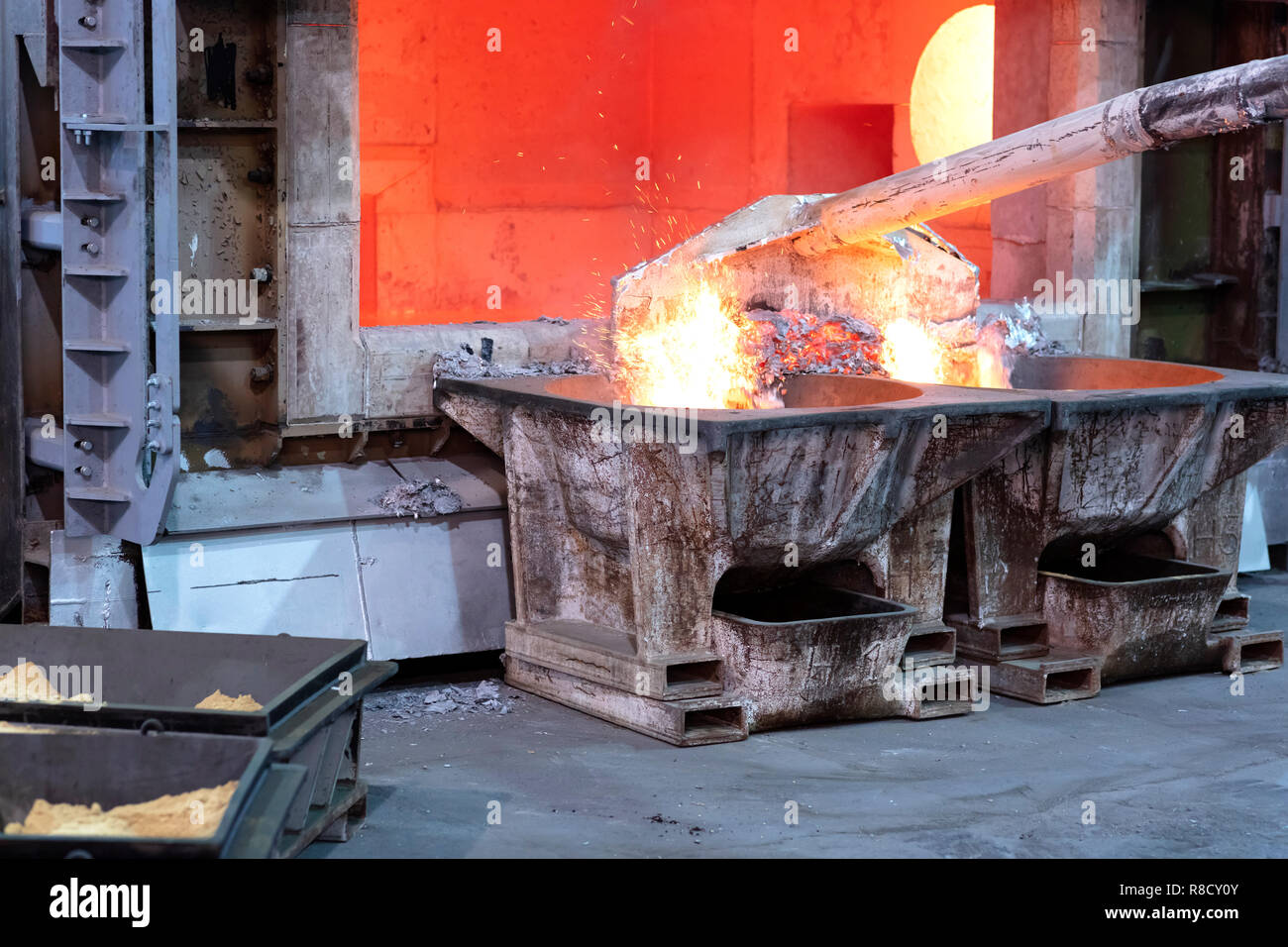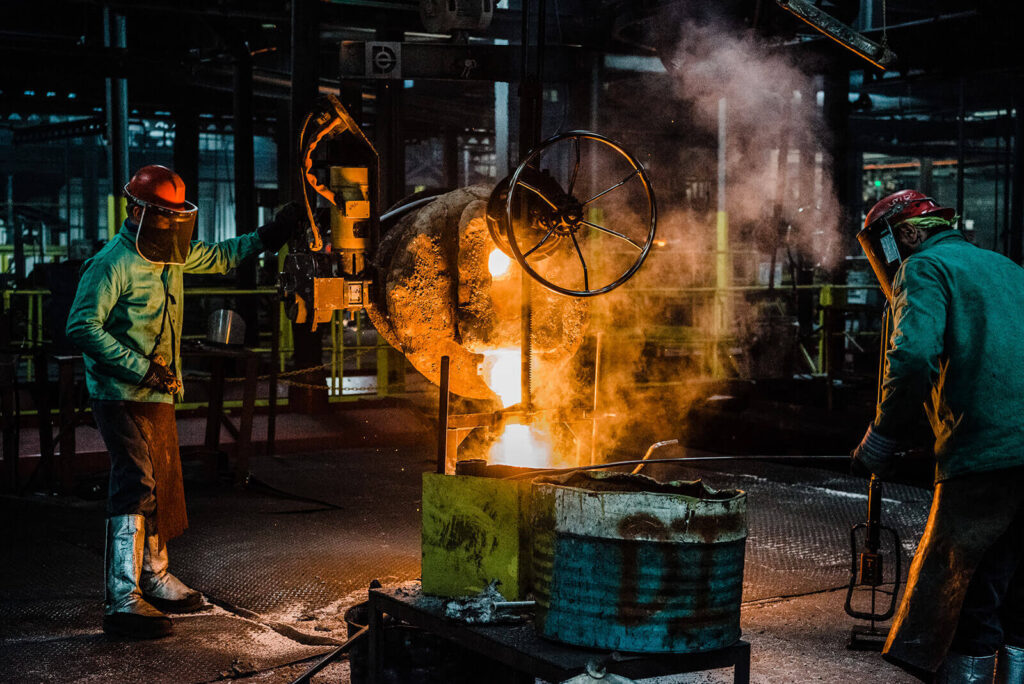The engineering behind Aluminum Foundry and durability
All Concerning Aluminum Foundry: Trick Uses and Its Effect On Product Advancement
Aluminum foundries are crucial in modern-day production, especially in sectors like automobile and aerospace. They use innovative strategies to create lightweight, long lasting parts that boost efficiency. The flexibility of aluminum additionally aligns with sustainability initiatives, making it a recommended product. The continuous innovations in casting techniques and their implications for item advancement raise important inquiries. What future developments might improve the landscape of aluminum foundries and their applications?
Introduction of Aluminum Foundries
Aluminum foundries act as vital centers in the metalworking market, focusing on the casting of aluminum and its alloys. These centers make use of different techniques, including sand casting, die casting, and investment casting, to change raw aluminum right into usable types. Each casting technique uses unique benefits, catering to various job requirements varying from small parts to big architectural aspects.
The foundries run via a meticulous process that starts with melting aluminum, followed by pouring the liquified metal right into mold and mildews. After cooling down, the castings go through completing procedures, which may involve machining and surface area treatment to fulfill specific specs.
Quality assurance is critical, ensuring that the last items meet industry standards and customer assumptions. Additionally, aluminum foundries frequently stress sustainability by recycling scrap aluminum, therefore lowering waste and conserving sources. This commitment to reliable production and environmental obligation settings aluminum foundries as vital contributors to the production landscape.

Key Applications of Aluminum Castings
Aluminum castings serve important functions in numerous industries, especially in automobile and aerospace fields. In the automotive sector, they add to lightweight structures and efficient efficiency. Likewise, aerospace element production depends on aluminum castings for their strength and deterioration resistance, necessary for high-performance applications.
Automotive Sector Applications
In the vehicle industry, aluminum castings play an important role in boosting vehicle performance and performance. These castings are extensively made use of for components such as engine blocks, transmission real estates, and suspension components. Their lightweight nature adds to minimized car weight, which consequently improves fuel economic situation and handling. In addition, aluminum's superb thermal conductivity enables efficient heat dissipation, essential for high-performance engines. The deterioration resistance of aluminum also expands the life expectancy of automobile components, reducing upkeep costs. In addition, developments in casting technologies enable the production of intricate shapes, enhancing the layout and performance of components. Overall, aluminum castings are important to modern-day automotive engineering, sustaining innovation and sustainability in automobile design.
Aerospace Part Manufacturing
The aerospace market increasingly counts on aluminum castings for a variety of crucial parts because of their advantageous homes. Light-weight yet solid, aluminum castings improve gas effectiveness and total performance in aircraft style. Elements such as engine mounts, structural structures, and landing gear are frequently produced utilizing aluminum casting strategies, allowing suppliers to achieve intricate geometries while preserving architectural integrity. The high resistance to rust and thermal buildings of aluminum additionally contribute to the durability and dependability of aerospace parts. Furthermore, developments in casting modern technologies, such as precision casting and 3D printing, have increased the capacities of aluminum in this industry. Ultimately, aluminum castings play a necessary duty in conference rigid security criteria and performance requirements in modern-day aerospace applications.
Benefits of Making Use Of Aluminum in Manufacturing
While numerous materials are offered for production, aluminum sticks out due to its special combination of buildings that boost effectiveness and performance. One significant benefit of aluminum is its lightweight nature, which adds to minimized energy usage and boosted fuel effectiveness in different applications. In addition, aluminum exhibits excellent deterioration resistance, expanding the lifespan of items and minimizing upkeep expenses. Its high thermal and electrical conductivity makes it suitable for warmth exchangers and electrical parts, while its pliability enables flexible designs and intricate shapes.
Aluminum is recyclable, advertising sustainability in making processes. This reusability not only saves resources yet additionally reduces the carbon footprint related to production. The adaptability of aluminum to various alloys additionally boosts its utility in varied sectors, from automobile to consumer electronic devices. Jointly, these characteristics make aluminum an ideal choice for manufacturers looking for to stabilize performance, cost-effectiveness, and ecological obligation.
Innovations in Casting Techniques
Recent developments in casting strategies have actually substantially transformed the aluminum shop sector. The integration of 3D printing modern technology click this site has made it possible for a lot more complex styles, while enhanced alloy solutions boost efficiency and durability. These advancements are driving efficiency and increasing the applications of aluminum in different fields.
3D Printing Assimilation

Enhanced Alloy Formulas
Developments in aluminum factory modern technology have brought about the development of boosted alloy solutions that boost casting performance and product properties. These cutting-edge formulations frequently include components such as silicon, magnesium, and copper, which optimize stamina, ductility, and corrosion resistance. By fine-tuning the structures, makers can achieve details features tailored to diverse applications, from automotive to aerospace industries. Furthermore, these boosted alloys promote much better fluidity during the casting procedure, lowering problems and enhancing surface area coating. Therefore, the efficiency of manufacturing is considerably boosted while preserving stringent high quality standards. This development in alloy growth not just enhances manufacturing yet also sustains the creation of lighter, more powerful elements, ultimately progressing item development and performance.
Effect on Aerospace and Automotive Industries
The notable impact of aluminum foundries on the aerospace and auto industries can not be overstated. Aluminum alloys, understood for their lightweight and high strength, have actually transformed the design and production processes in both markets. In aerospace, the decrease in weight straight correlates to fuel performance, enabling for longer trips and reduced exhausts. Parts such as airplane frameworks, wings, and engine parts gain from aluminum's superb fatigue resistance and deterioration resistance.
In the automotive sector, aluminum foundries add to the production of lighter vehicles, boosting performance and gas economic situation while fulfilling strict ecological laws. Making use of aluminum in engine blocks, body panels, and wheels has actually enhanced considerably, driven by consumer demand for much more reliable automobiles. Additionally, technologies in casting strategies have improved the precision and capability of parts, allowing producers to establish even more integrated and complex layouts, consequently cultivating improvements our website in both industries.
Sustainability Practices in Aluminum Foundries
Aluminum foundries are significantly accepting sustainability practices to reduce their ecological impact while fulfilling the expanding demands of the aerospace and auto industries. These techniques consist of the implementation of energy-efficient innovations, such as electric melting heaters and advanced warm recuperation systems, which greatly reduced power usage (Aluminum Foundry). Additionally, numerous foundries are focusing on making use of recycled aluminum, which calls for much less energy and leads to lowered greenhouse gas emissions contrasted to primary aluminum production
Water conservation campaigns are likewise getting grip, with foundries using closed-loop systems to decrease water usage and stop contamination. Additionally, waste management techniques, consisting of reusing scrap and reducing dangerous waste, add to an extra lasting procedure. By adopting these techniques, aluminum foundries not just boost their competitiveness yet additionally straighten with global sustainability goals, inevitably supporting a round economic climate and fostering innovation in environmentally pleasant manufacturing processes.
Future Patterns in Aluminum Spreading Modern Technology
As the need for lightweight and long lasting materials remains to climb, advancements in casting innovation are positioned to improve the aluminum market. Advanced strategies such as 3D printing and automated casting processes are gaining grip, allowing for a lot more complex geometries and reduced product waste. The combination of expert system and equipment understanding is additionally enhancing quality control and process optimization, lessening problems and boosting effectiveness.
The growth of brand-new aluminum alloys is broadening the application range of actors products, making them suitable for sectors from automotive to aerospace. Boosted recycling approaches are anticipated to better lower ecological influences, lining up with worldwide sustainability objectives.
Furthermore, using smart sensing units in casting processes is expected to make it possible for real-time tracking, making certain better precision and uniformity. These patterns represent a transformative period in aluminum casting innovation, making it possible for manufacturers to meet developing market needs while focusing on sustainability and technology.
Often Asked Inquiries
How Is Aluminum Recycled After Usage in Products?
Aluminum reusing includes accumulating, arranging, and melting used aluminum items (Aluminum Foundry). The molten steel is then cast right into brand-new types, lowering power usage and protecting all-natural resources, making it an efficient and sustainable procedure for aluminum recuperation
What Safety Procedures Are Carried Out in Aluminum Foundries?
Safety and security measures in aluminum foundries consist of appropriate air flow systems, personal safety tools, normal safety and security training, equipment maintenance procedures, and emergency situation action plans, all intended at reducing risks related to heats and unsafe products throughout production.
How Do Aluminum Foundries Guarantee Top Quality Control?
Aluminum foundries implement extensive high quality control processes, including material evaluations, temperature surveillance, and dimensional checks. These measures guarantee product uniformity, minimize defects, and follow industry requirements, eventually enhancing client contentment and operational performance.
What Are Typical Obstacles Encountered by Aluminum Foundries?
Aluminum foundries frequently encounter difficulties such as keeping constant top quality, handling manufacturing costs, ensuring prompt delivery, resolving equipment upkeep, and adapting to advancing market laws. These elements can click here for more info considerably influence general functional effectiveness and success.
Exactly How Does Aluminum Spreading Affect Item Weight?
Aluminum casting substantially reduces item weight due to aluminum's reduced thickness compared to other steels - Aluminum Foundry. This light-weight characteristic boosts design flexibility, improves gas effectiveness in transportation applications, and offers advantages in different markets needing weight-sensitive components